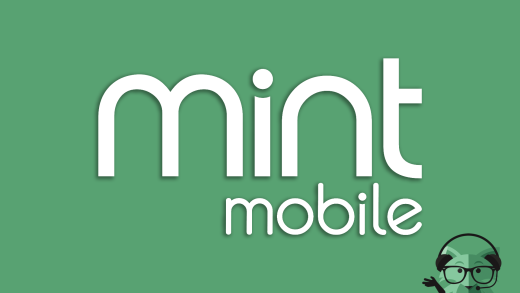I write down each one in black biro in a white notebook and when I count up the titles at the end of the year, the number is always too low. Here I am then, repenting of minutes spent slack-gazed at Instagram, or hours squandered watching ’90s British sitcom and early Richard Curtis venture The Vicar of Dibley. (The vicar’s got knockers, is the central joke. In my defense, I had flu.) When, at the end of that sick week in August, I’d scraped iPlayer’s barrel for its last dredge of Dawn French in a cassock, Mary Oliver pulled up a chair in the corner of the room of my mind, crossed her arms and said, huh, so this is what you did with your one wild and precious life. I’m a little disappointed in me, too, Mary. But Mary, I also read some books.
I closed out the year with a Lawrence kick. I haven’t read him since I was a teenager, i.e. not yet a woman, certainly not a Woman in Love. How wonderful to re-encounter Ursula and Gudrun—especially Gudrun, ah, Gudrun in your smashing tights making your weird little serious woodcuts—as an equal. Or so I flattered myself; I don’t dress as well (my tights, neither silken nor emerald, are cheap, black, and have holes in the toes) but I delighted in our shared anti-natalist sentiments and auto-Anglophobia. I really think we’d be great pals, me and the Brangwen gals. I’m working on a third novel, hopelessly striving to build the kind of intelligent architecture that makes possible accretive narrative meaning, and reading Women In Love, I realized, mildly scandalized, that there’s a modular quality to the book: discounting the last 50 pages or so, you could basically rearrange chapters however you liked and the thing would have the same psychological intensity. An uncharitable way of putting this would be that one of the best novels of the 20th century is less than the sum of its parts. Speaking of love (always!) I finally read Phyllis Rose’s enduring and rightly beloved Parallel Lives. May we all be George Eliot and George Henry Lewes.

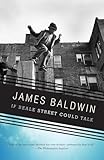
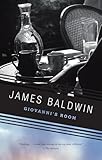 Shamefully, before this yea,r I’d only ever read Baldwin’s essays, no fiction, so I read Go Tell It on the Mountain and If Beale Street Could Talk, which was even better. The only reason I didn’t read Giovanni’s Room, which I understand to be his best, is because the other two were on sale and cheap at my beloved local used bookstore, Trident, and Giovanni’s Room wasn’t. That’s how it goes.
Shamefully, before this yea,r I’d only ever read Baldwin’s essays, no fiction, so I read Go Tell It on the Mountain and If Beale Street Could Talk, which was even better. The only reason I didn’t read Giovanni’s Room, which I understand to be his best, is because the other two were on sale and cheap at my beloved local used bookstore, Trident, and Giovanni’s Room wasn’t. That’s how it goes.


 Living in Colorado, it seemed only right that I redress another lacuna: Willa Cather, she of the Great Plains. I read The Song of the Lark and My Antonia and both felt like children’s literature, which I mean as praise: stories in an old-fashioned sense—smooth, immersive, consoling, benign. Can’t say the same for Bellow. With Herzog and Seize the Day, I relished the dynamism of the high-low prose and also found myself literally choking on—actual spluttering—the sexism and racism. Since we now find ourselves in the category of disreputable men, I can tell you that I also reread both Lolita and Nausea, like I was 15 again. I don’t need to tell you they’re both great; you remember this from when you were 15.
Living in Colorado, it seemed only right that I redress another lacuna: Willa Cather, she of the Great Plains. I read The Song of the Lark and My Antonia and both felt like children’s literature, which I mean as praise: stories in an old-fashioned sense—smooth, immersive, consoling, benign. Can’t say the same for Bellow. With Herzog and Seize the Day, I relished the dynamism of the high-low prose and also found myself literally choking on—actual spluttering—the sexism and racism. Since we now find ourselves in the category of disreputable men, I can tell you that I also reread both Lolita and Nausea, like I was 15 again. I don’t need to tell you they’re both great; you remember this from when you were 15.


 I read a lot of friends. (But not enough.) Sheila’s Motherhood and Pure Colour both found me at exactly the moment I needed them, which is what Sheila’s work does to people. She’s spooky like that. I read Katie’s exquisite Intimacies (we share a book birthday.) I tore through Josh’s crackling, hilarious The Netanyahus and Christine’s very sharp The Life of the Mind. I read Alex’s inspired Something New Under the Sun and Ramona’s dear and strange stories in Awayland. I read my pal Geoff’s hypnotic Someone Who Isn’t Me and my old friend Matt’s screamingly hilarious A Class of Their Own, a memoir about tutoring the children of the super rich. I just started my brilliant friend Amia’s The Right to Sex.
I read a lot of friends. (But not enough.) Sheila’s Motherhood and Pure Colour both found me at exactly the moment I needed them, which is what Sheila’s work does to people. She’s spooky like that. I read Katie’s exquisite Intimacies (we share a book birthday.) I tore through Josh’s crackling, hilarious The Netanyahus and Christine’s very sharp The Life of the Mind. I read Alex’s inspired Something New Under the Sun and Ramona’s dear and strange stories in Awayland. I read my pal Geoff’s hypnotic Someone Who Isn’t Me and my old friend Matt’s screamingly hilarious A Class of Their Own, a memoir about tutoring the children of the super rich. I just started my brilliant friend Amia’s The Right to Sex.

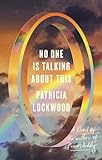
 I duly undertook and enjoyed 2021’s classic Internet-novel-pairing of debuts, Fake Accounts and No One Is Talking About This. Other reading that felt obligatory, discourse-wise, which doesn’t preclude it also being pleasurable, included Rachel Cusk’s Second Place and Torrey Peters’s Detransition Baby.
I duly undertook and enjoyed 2021’s classic Internet-novel-pairing of debuts, Fake Accounts and No One Is Talking About This. Other reading that felt obligatory, discourse-wise, which doesn’t preclude it also being pleasurable, included Rachel Cusk’s Second Place and Torrey Peters’s Detransition Baby.


 I read two books with “mountain” in the title, which, intellectually speaking, is an entirely null observation. One was Kawabata’s The Sound of the Mountain, another Nan Shepherd’s The Living Mountain, a gem of a book from 1977 about walking the Cairngorms. It was a gift from my friends Brigid and Jamie, and it changed the way I think about hiking here in the Rockies. Other nonfiction I read included two very different essay collections, both of which I admired deeply: Namwali Serpell’s brilliant Stranger Faces and Barrett Swanson’s super smart and compassionate Lost in Summerland. I didn’t read enough poetry; mainly just bits and pieces, paddling about in Adrienne Rich and A.R. Ammons, but I enjoyed, in their entireties, Kyce Bello’s Refugia and Michelle Otero’s Bosque.
I read two books with “mountain” in the title, which, intellectually speaking, is an entirely null observation. One was Kawabata’s The Sound of the Mountain, another Nan Shepherd’s The Living Mountain, a gem of a book from 1977 about walking the Cairngorms. It was a gift from my friends Brigid and Jamie, and it changed the way I think about hiking here in the Rockies. Other nonfiction I read included two very different essay collections, both of which I admired deeply: Namwali Serpell’s brilliant Stranger Faces and Barrett Swanson’s super smart and compassionate Lost in Summerland. I didn’t read enough poetry; mainly just bits and pieces, paddling about in Adrienne Rich and A.R. Ammons, but I enjoyed, in their entireties, Kyce Bello’s Refugia and Michelle Otero’s Bosque.
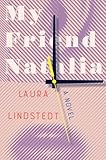

 I wrote about a sly and intriguing novel called My Friend Natalia by Finnish author Laura Lindstedt, as well as the swaggy flex of Sean Thor Conroe’s fuccboi. Predictably, I adored Annie Ernaux’s The Years, which I stole from my friend Osh while we were horsepacking in the Flat Tops wilderness. I read Adorno’s Prisms in a lazy river. Hearing a voice intone this—“The question about poetry after Auschwitz has been replaced with that of whether you could bear to read Adorno and Horkheimer next to the pool”—I wondered, as my inflatable donut idly bumped its way around the artificial waterway, if I’d gained one over on Walter Benjamin in terms of hypothetical egregiousness made real. Not next to the pool, but in it, dude. And not even a pool. A Lazy River.
I wrote about a sly and intriguing novel called My Friend Natalia by Finnish author Laura Lindstedt, as well as the swaggy flex of Sean Thor Conroe’s fuccboi. Predictably, I adored Annie Ernaux’s The Years, which I stole from my friend Osh while we were horsepacking in the Flat Tops wilderness. I read Adorno’s Prisms in a lazy river. Hearing a voice intone this—“The question about poetry after Auschwitz has been replaced with that of whether you could bear to read Adorno and Horkheimer next to the pool”—I wondered, as my inflatable donut idly bumped its way around the artificial waterway, if I’d gained one over on Walter Benjamin in terms of hypothetical egregiousness made real. Not next to the pool, but in it, dude. And not even a pool. A Lazy River.
I reread most of Jhumpa Lahiri to review her latest, Whereabouts, and (re)admired the ambition and control of the early novels. I also loved and reviewed the new book from a young Irish writer called Sally Rooney, who you should maybe check out. It’s called Beautiful World, Where Are You.


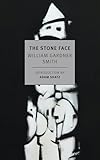 Other treasures included The Beginners by Anne Serre and Troubles by J.G. Farrell and The Stone Face by William Gardner Smith. Claire Louise Bennett is a genius and should be protected at all costs: I adored Checkout 19. It made me homesick, which is quite a feat.
Other treasures included The Beginners by Anne Serre and Troubles by J.G. Farrell and The Stone Face by William Gardner Smith. Claire Louise Bennett is a genius and should be protected at all costs: I adored Checkout 19. It made me homesick, which is quite a feat.
Risking the derision of my friends, I went around brandishing Crossroads and declaring it “Tolstoyan!!!!!” with that many exclamation points. To my mind, it recalled that panoramic, deft manipulation of Anna Karenina’s cast of characters, all that great shifting moral light. I don’t want to die on this hill, I just want to sit on this hill and read the rest of A Key to All Mythologies! On the subject of Russians, I loved being guided through some top drawer Chekov and co. in George Saunders’s A Swim in the Pond in the Rain. There’s no one like George, the beloved uncle of American letters, to restore your faith in our species—to rest a kind hand on your shoulder and tell you you’re okay, things are okay, we’ll be okay. I read most of that book over a vast bowl of vegan shoyu at Ivan Ramen in the Lower East Side, and that felt right.


 Do plays count? What with the world ending, we had a standing Sunday night Zoom date to read them with friends. The main thing was doing stupid accents. The Brits took the piss out of the Americans’ Dick Van Dyke cockney and the Americans roasted the Brits for unacceptable Southern drawls. Shout out and tossed roses to all The Lockdown Players. I’ve yet to meet a Caryl Churchill or Annie Baker play I didn’t love. Will Arbery’s Heroes of the Fourth Turning was savage and great, as was Will Eno’s The Realistic Joneses. Ayad Akhtar’s Homeland Elegies impressed me and made me want to read his plays.
Do plays count? What with the world ending, we had a standing Sunday night Zoom date to read them with friends. The main thing was doing stupid accents. The Brits took the piss out of the Americans’ Dick Van Dyke cockney and the Americans roasted the Brits for unacceptable Southern drawls. Shout out and tossed roses to all The Lockdown Players. I’ve yet to meet a Caryl Churchill or Annie Baker play I didn’t love. Will Arbery’s Heroes of the Fourth Turning was savage and great, as was Will Eno’s The Realistic Joneses. Ayad Akhtar’s Homeland Elegies impressed me and made me want to read his plays.
It’s my job to read, there’s so much I urgently need to read, and with that in mind, I’d say 100 would strike me as a respectable number of books for a year. Eighty would be okay. Sixty… fine. How many did I read? Not counting plays, not counting books started and not quite finished—45. (“Doesn’t everything die at last, and too soon?”) Next year, I’ll fail better. Even if the number’s higher, the number will be the same: not enough.
More from A Year in Reading 2021 (opens in a new tab)
Do you love Year in Reading and the amazing books and arts content that The Millions produces year round? We are asking readers for support to ensure that The Millions can stay vibrant for years to come. Please click here to learn about several simple ways you can support The Millions now.
Don’t miss: A Year in Reading 2020, 2019, 2018, 2017, 2016, 2015, 2014, 2013, 2012, 2011, 2010, 2009, 2008, 2007, 2006, 2005
The post A Year in Reading: Hermione Hoby appeared first on The Millions.





